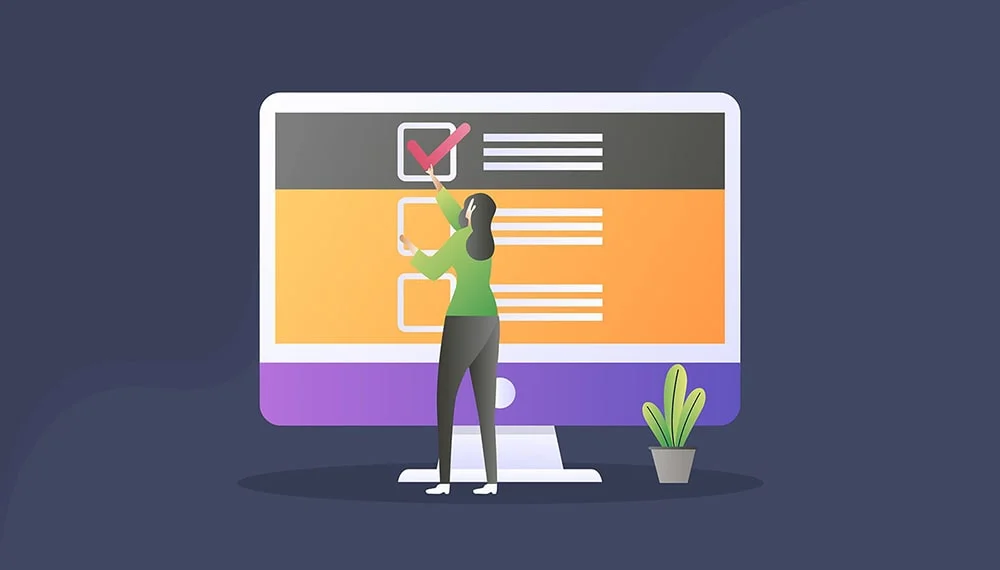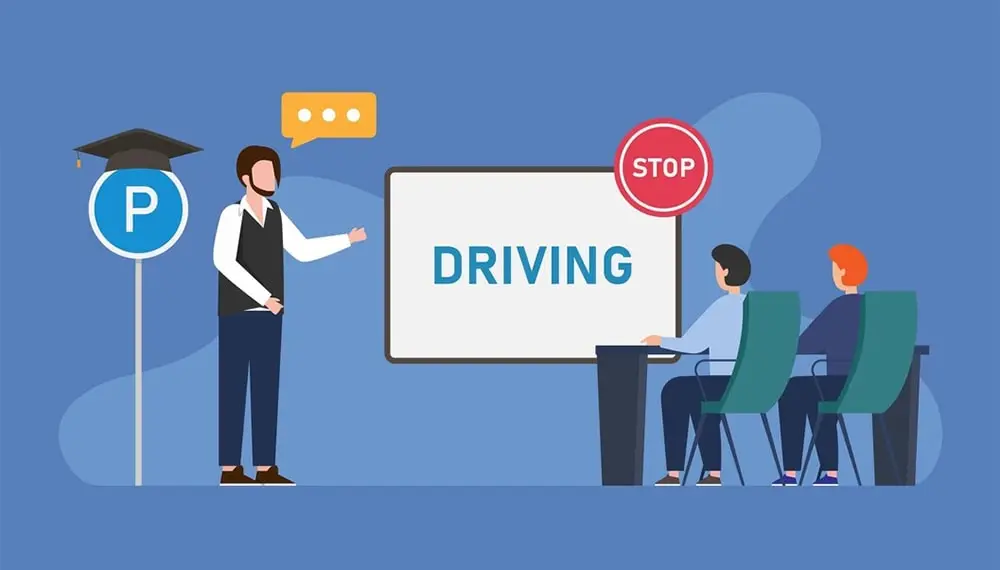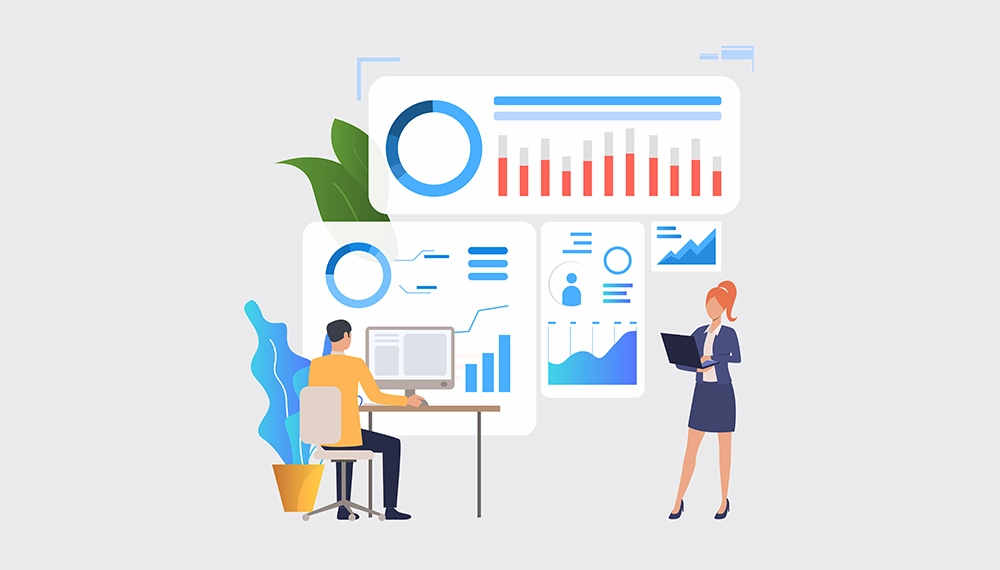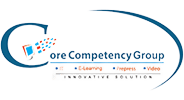Choose the Right LMS: Assess Your Needs with This Checklist
Rohit Kumar
27 May, 2024

With the vast array of learning management systems (LMS) available today, organizations face the challenge of finding the one that best fits their training needs. A suitable LMS can streamline learning processes, improve employee engagement, and offer valuable insights into training effectiveness.
Selecting an LMS requires careful assessment of your company's goals and challenges. What you choose will impact how training content is created, delivered, and analyzed. To ensure your investment aligns with your business goals, it's essential to have a clear understanding of what to look for.
This guide provides a comprehensive checklist to steer your selection process. From evaluating content authoring capabilities to analyzing integration needs, this article will help you distinguish the features that will support your organization's training and development goals. By following this checklist, you'll be better prepared to make an informed decision that benefits your workforce and drives measurable business results.
Understanding Your Corporate Training Needs
Selecting the suitable LMS begins with thoroughly understanding your organization's training needs. A clear grasp of your goals and challenges ensures that your investment delivers the intended benefits.
Define Organizational Goals and Challenges
Start by identifying your organization's overarching goals. What training outcomes are most critical? Are you looking to streamline onboarding, support compliance, or upskill teams for new projects? Recognizing challenges like high turnover or low engagement will help you focus on your selection criteria.
Identify the Target Audience
Consider the different groups that will use the LMS. Are you training internal employees, partners, or customers? Each group may require a unique content delivery and engagement approach.
Determine Training Frequency and Content Types
Evaluate the frequency and type of training required. Will your teams engage in regular, structured programs or access on-demand resources? Do you need courses that blend instructor-led and online elements or deliver purely digital content?
Clarify Compliance and Certification Requirements
If your industry requires specific certifications or regulatory compliance, ensure your LMS supports the tracking and managing of these credentials. This feature is crucial in demonstrating training effectiveness and meeting external standards.
With these factors in mind, you can begin building a checklist of the LMS features and capabilities that align with your organization's goals and audience needs. This preparation will clarify your priorities when evaluating LMS platforms.
LMS Functional Requirements
Content Authoring Tools
A good LMS should simplify creating, importing, and managing course content. Look for features like built-in authoring tools and seamless integration with third-party software. Support for learning standards such as SCORM or xAPI ensures compatibility with various course formats and improves content interoperability.
Course Organization and Delivery
The LMS should offer flexibility in how courses are organized and delivered. Key considerations include:
-
Tagging and taxonomy to organize courses for easy discovery
-
Support for different learning models like eLearning, blended learning, and instructor-led training
-
Content delivery that adapts to learner preferences, with features like on-demand access and personalized learning paths
User Management and Scalability
Efficient user management and scalability are crucial. Ensure the system has:
-
Robust user and role management tools
-
The ability to assign different permissions for learners, instructors, and administrators
-
Scalability that can accommodate organizational growth and varying learner volumes
Analytics and Reporting
Tracking and analyzing learning progress helps assess the impact of training initiatives. An effective LMS should include:
-
Real-time dashboards and detailed reporting features
-
APIs for integration with third-party tools to generate comprehensive analytics
-
The ability to customize reports for unique business metrics
These functional requirements form the foundation of a capable LMS and should be at the forefront of your checklist as you evaluate different solutions. A well-equipped system will empower your organization to streamline learning processes and achieve measurable results.
Additional LMS Capabilities to Consider
Gamification and Social Learning
Incorporating gamification and social learning can significantly boost engagement and motivation.
Look for features like:
-
Leaderboards, badges, and rewards to incentivize progress
-
Discussion forums and social media-style sharing to foster collaboration
-
Peer-to-peer learning opportunities for knowledge exchange
Accessibility and Mobile Learning
Ensuring all learners have access to courses, regardless of their abilities or devices, is vital.
Consider the following:
-
Compliance with accessibility standards to accommodate different needs
-
Responsive design that adjusts content for any screen size, including mobile devices
-
Offline learning capability is available for those with limited internet connectivity
Customization and Branding
The LMS should be adaptable to align with your organization's branding and specific training requirements. Key customization features include:
-
White labeling and branding should match the system's appearance with your corporate identity
-
Localization options to support multiple languages
-
Tools to tailor courses and user interfaces for different roles
Integrations and Security
Integrating seamlessly with other tools and protecting sensitive data is essential. Ensure the LMS provides:
-
Integrations with existing HR systems, CRMs, video conferencing tools, and other software
-
Single sign-on (SSO) for easier access management
-
Data security protocols like encryption and compliance with GDPR or similar standards
These additional capabilities can refine your LMS selection, ensuring it supports learner engagement, accessibility, customization, and integration. These features enable a more versatile, user-friendly, and secure learning environment.
Assessing Provider and Support Requirements
Choosing the right LMS provider requires carefully evaluating their experience, support quality, and adaptability to your organization’s unique needs.
Reputation and Experience
Investigate the provider’s track record to see if they have a history of delivering quality services. Check:
-
How long have they been in the market
-
Case studies or client testimonials to gauge past performance
-
Industry awards and recognitions
Flexible Pricing Models
Examine the provider's pricing models to determine the best value for your organization. Consider:
-
Subscription-based models or perpetual licensing
-
Pay-per-user versus pay-per-active-user pricing
-
Free trials or pilot programs are available to test the system before fully committing
Training, Onboarding, and Support
The LMS provider should offer comprehensive training and support services. Look for:
-
Onboarding programs to help your team quickly adapt to the new system
-
Training resources such as webinars, documentation, or in-person workshops
-
Multiple support channels like phone, email, and live chat
Ongoing Support and Continuous Improvement
A good provider will ensure your LMS remains aligned with changing training goals. Evaluate:
-
Their responsiveness to technical issues and downtime
-
Availability of regular software updates or new features
-
Dedicated account managers or client success teams for long-term guidance
By examining these factors, you can determine an LMS provider that will be a reliable partner. Their ongoing support will ensure your learning initiatives remain effective and aligned with evolving organizational goals.
Final Considerations Before Implementation
Conduct Pilot Tests or Trials
Before committing to an LMS, use a pilot program or free trial to see how well the platform meets your organization's needs. During the trial:
-
Test core features like course creation, delivery, and analytics
-
Verify ease of use for different user roles
-
Identify potential technical issues and evaluate the support team’s responsiveness
Gather Feedback from Stakeholders and Learners
Gather input from key stakeholders and learners to ensure the LMS aligns with organizational goals and user needs. Focus on:
-
Admins: Can they efficiently manage users and customize content?
-
Instructors: Are course organization and communication tools effective?
-
Learners: Is the system intuitive, engaging, and mobile-friendly?
Prioritize LMS Features by Needs and Budget
Align the LMS features with the goals of your training program and available budget. To do this:
-
Rank essential features for compliance, engagement, or scalability
-
Compare pricing models and adjust for projected user growth
-
Consider which advanced features are worthwhile based on current and future needs
Plan a Smooth Implementation
Create an implementation plan that prepares your team and ensures a seamless transition. Include:
-
A detailed timeline covering setup, configuration, and training
-
Comprehensive communication across departments to foster collaboration
-
A phased rollout will ensure adoption and allow time for adjustments
These final steps and considerations will allow you to implement an LMS that serves your organization well. Careful planning ensures the system delivers consistent results and supports future training strategies.
Choosing the right LMS is a pivotal decision that requires a strategic approach. Understanding your organization's training needs, defining essential features, and assessing additional capabilities ensures a strong foundation for your search. Evaluating provider support and pricing helps establish a reliable partnership that aligns with your long-term goals.
A comprehensive checklist clarifies your priorities and guarantees that you invest in a system that meets the needs of learners, instructors, and administrators. Testing the system with a trial or pilot run, gathering stakeholder feedback, and planning a phased rollout will lead to a smoother transition and better adoption.
Core Competency’s LMS offers the essential features and flexibility to achieve corporate training goals. We can support your evolving workforce training needs with a responsive support team and scalable platform. Book a demo today to see how Core Competency can transform your organization's learning and development initiatives.




